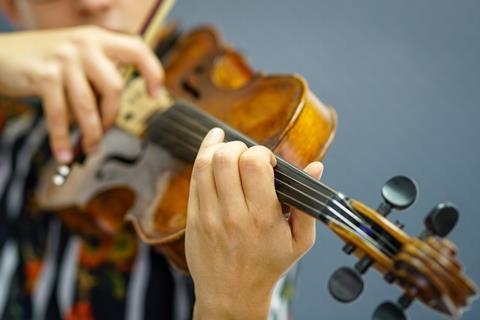Perfecting bowing is a lifelong quest for string players – but what about pizzicato? Cellist Davina Shum advocates setting aside some dedicated practice time to this neglected technique

Discover more Featured Stories like this in The Strad Playing Hub
Read more premium content for subscribers here
String players certainly have their work cut out in terms of mastering the numerous bowing techniques available. To conquer the versatility and flexibility of the bow is a lifelong quest, the end of which is never really reached. Heck, even learning to hold the thing can prove troublesome, as anyone who teaches beginners can attest.
But how many string players can say they’ve dedicated the same amount of time honing their pizzicato skills? When we embark on a practice session, there is plenty of emphasis on starting with simple tasks, such as open-string tone exercises, not to mention the inevitability of scales – but it’s all with the bow. It almost sounds silly to suggest otherwise. In fact, I can hear my inner (exasperated) teacher saying, ‘Yes, of course it’s with the bow!’
Most of our repertoire requires us to put hair to string, so it’s understandable that we need to ensure we are well versed in everything – flawless legato to make Ševčík proud, tremendous tremolo to withstand any Bruckner symphony, ricochet that evokes the equine trotting of the William Tell overture and so on. Additionally, we need to invest the time to ensure we can do all of this in a sustainable way without injury, so it’s only natural that we string players are usually found with bow in hand.
However, string players would benefit from at least a bit of dedicated practice time on pizzicato. As beginners, we often start out plucking our first notes, before graduating to making ‘bunny’ shapes with the right hand (the two middle fingers touching the thumb in a curved shape, the other two fingers sticking up) and progressing to pencils, sticks and then fractional bows before arco playing seemingly takes over our lives. Continuing our education, we learn to transition from arco to pizzicato seamlessly without dropping our bow in order to play a few plucked notes before switching back. We might even come across a piece of repertoire that is wholly pizzicato, such as the ‘Playful Pizzicato’ movement from Britten’s Simple Symphony, or the third movement of Tchaikovsky’s Symphony no.4 – even then, it’s seen as a novelty.
I recall my first rehearsal with the Southbank Sinfonia when I moved to the UK in 2013. We were preparing the last movement of Beethoven’s ‘Eroica’ Symphony, where the unison string section introduces the pizzicato theme. I didn’t give it much thought beyond the notes, until the rehearsal leader stopped and said, ‘Let’s try that again, and can we try to hold back slightly? Remember, pizzicato always has a tendency to rush.’ Despite my being heavily jetlagged, that phrase stuck with me – why was I only hearing about this now, as a postgraduate musician?
The tempo leans forward, causing a cataclysmic avalanche of notes
The more I thought about it, the more I realised how true that was. With a bow in hand, we focus so much on the response of the string and the level of attack required to make the string speak as we wish. With pizzicato, the sound is immediate. We pluck the string and continue, but forget to take the time that comes invariably with arco playing. In doing so, the tempo leans forward, causing a cataclysmic avalanche of notes amid cries of, ‘I can’t pluck this fast!’
I have encountered numerous instances of rushing pizzicato in my professional career, and it’s a maddening feeling of push-and-pull between members of an ensemble at times. To maintain a steady tempo, one must consciously hold back, subdivide and make sure the immediacy of plucking notes doesn’t get out of control. I’ve had to pick up the subtle nuances of playing pizzicato while on the job. I wonder if players would be interested in implementing pizzicato both in their daily practice and within lessons with students – in order to treat it in the same way that we do the bowed tone exercises (among other things) that have been instilled in us.
Read: Opinion: The benefits and challenges of playing at the back of the section
Read: Fake it ’til you make it: The art of orchestral faking
Discover more Featured Stories like this in The Strad Playing Hub
Read more premium content for subscribers here
The number one source for playing and teaching books, guides, CDs, calendars and back issues of the magazine.
In The Best of Technique you’ll discover the top playing tips of the world’s leading string players and teachers. It’s packed full of exercises for students, plus examples from the standard repertoire to show you how to integrate the technique into your playing.
The Strad’s Masterclass series brings together the finest string players with some of the greatest string works ever written. Always one of our most popular sections, Masterclass has been an invaluable aid to aspiring soloists, chamber musicians and string teachers since the 1990s.
American collector David L. Fulton amassed one of the 20th century’s finest collections of stringed instruments. This year’s calendar pays tribute to some of these priceless treasures, including Yehudi Menuhin’s celebrated ‘Lord Wilton’ Guarneri, the Carlo Bergonzi once played by Fritz Kreisler, and four instruments by Antonio Stradivari.

























































4 Readers' comments